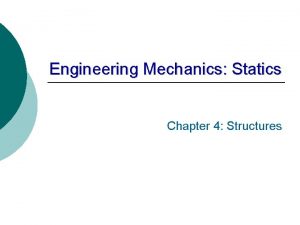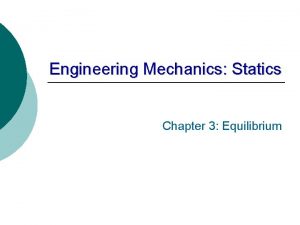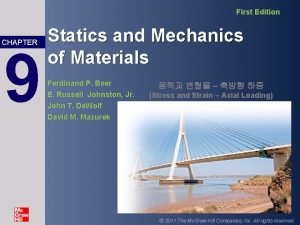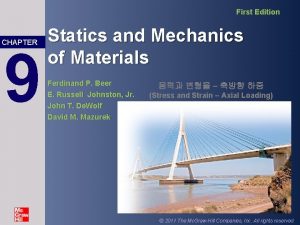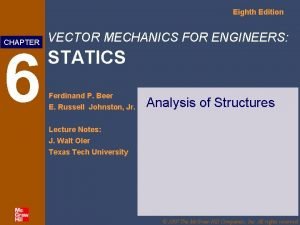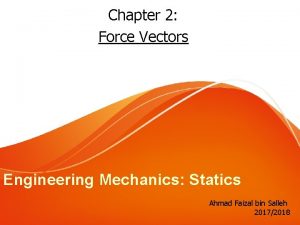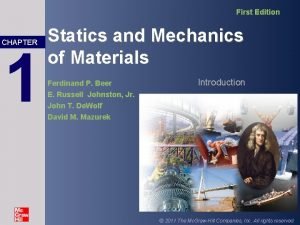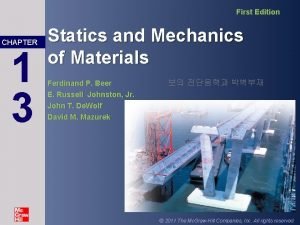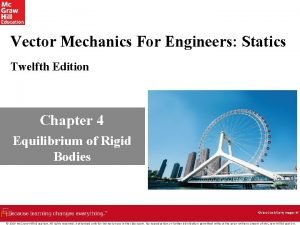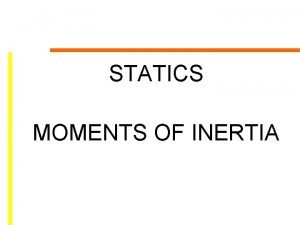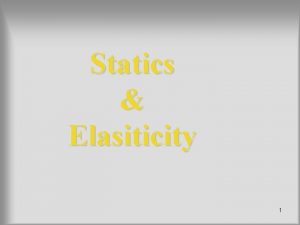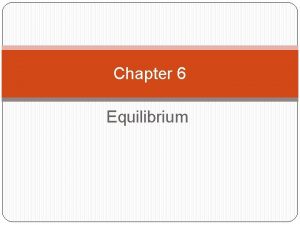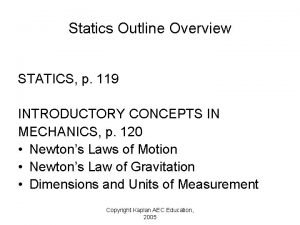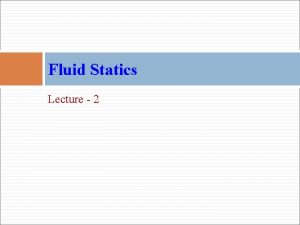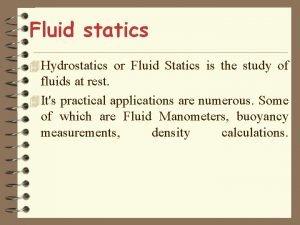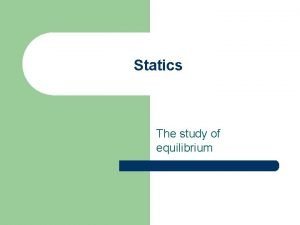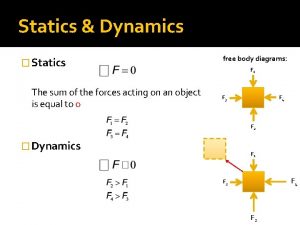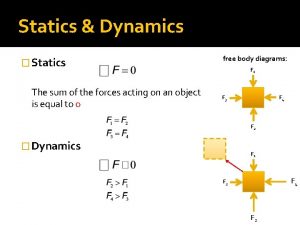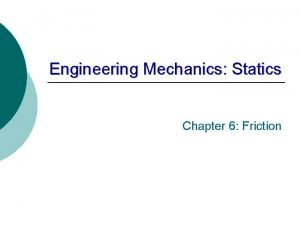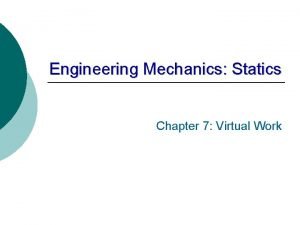Statics Chapter 4 Analysis of Structure Introduction Structure












- Slides: 12

Statics Chapter 4 Analysis of Structure

Introduction • Structure – connected system of members designed to support loads safely or to transfer forces effectively • Analysis of structures involves analyzing the equilibrium of the entire structure, part of the structure, or an individual member • In these types of problems determine the external reactions as well as the internal forces in the member • Internal forces are the forces within the members responsible for holding the structure together

External and Internal Forces in a Structure • External forces – include the weight the externally applied forces on the structure and the reactions from the supports. These forces are responsible for the equilibrium of the entire structure • Internal Forces – are the forces inside the structural members and are responsible for holding the structure together. • Limitation of the principle of transmissibility • When dealing with external forces on a structure the structure can be considered as a rigid body • So principle of transmissibility can be applied • When concern is the internal forces or the deformation of a structure – principle of transmissibility is not applicable

Trusses • Are frameworks composed of slender members joined together at the ends of the members • When a member of a truss lie essentially in a single plane the truss is a plane truss • Bridge trusses are usually plane trusses • Connected together with lateral bracing • Floor system provides the means for transmitting the load

Trusses • Two assumptions are used for truss analysis • All loadings are applied at the joints • The members are joined together by smooth pins • Based on these assumptions each truss member is a two force member • Entire truss can be considered an assembly of two force members connected at their ends by frictionless pins • Truss member is subjected to axial forces only – in tension or compression

Trusses • Simple truss – must be rigid – used to indicate that the truss will be able to maintain its initial shape and will not collapse under ordinary loading conditions • Statical determinacy • General method for determining the statically determinacy of a truss is by comparing the total number of independent equations available to the total number of unknowns • J be the number of joints • M the number of members • R the number of reaction components • 2 j=m+r

Method of joints • Truss analysis • Determining the internal axial force in each member of a truss • Necessary prerequisite to the design to know the force of truss members so sizes and connections can be designed property • Method of Joints • Each joint is isolated from the rest of the truss and equilibrium conditions of each joint are considered • Truss members are all two force bodies subjected to axial forces only • Sum Fx =0 • Sum Fy=0 • Free body diagrams – can be drawn for each joint and each member • Arrow Sign Convention – tension member is represented by arrows on each end of the member pointing away from the connected joints – compression member arrows point towards the joint • Sometimes difficult to tell, a position result indicates made right choice negative means the member is the opposite.

Method of Joints • Example 4 -1 • Example 4 -2

Zero Force member • Under certain loading conditions some truss members carry no loads – called zero force members • If joint is not subjected to any load or support reaction the equilibrium condition along the x direction requires that force to be zero • If a joint has two non collinear members and not subjected to any load or support reaction • Rules • If a non loaded truss joint is formed by three members two of which are collinear the third member must be a zero force member • If a non loaded truss joint is formed by two non collinear members then both of them must be zero force members • Example 4 -3

Method of Sections • Consists of passing a section through the members in question • Sicne there are three independent equations available we can solve up to three unknowns • The main advantage of the method of sections is that the force in a member can be determined directly by passing a section through the member • When a member has been cut its internal forces are exposed and they become external forces so they must be shown on the free body diagram • Figure 4 -10 page 159 and equations • Example 4 -4 • Example 4 -5 • Example 4 -6

Frames • Pin connected frames are structures containing one or more multiforce members - a multiforce member is acted upon by three or more forces that are not all in the axial direction of the member • Analysis of a frame • External reactions at the supports of most frames can be determined by considering the free body diagram of the entire frame • Identify all the two force members in the frame – two force member may or may not be straight – two forces in a two force member are queal and opposite and directed along the line joining the two points of application • Force at a pin connected joint between two multi force members represented by the horizontal and vertical components • Newton's law of action and reaction must be observed when forces are drawn • Generally three equilibrium equations can be written for the free body diagram • Direction of the unknown force components can be assumed arbitrarily as long as the law of action and reaction is observed • Sometimes not all the reaction components or joint forces can be solved from the free body diagram • Example 4 -7 • Example 4 -8

Machines • Are structures that consist of ne or more movable parts and at least ne of the members or part of the machine is a multiforce member • Analysis of machines • Similar to that of a frame except a machine may not be fully constrained because of the moveable parts. • Analysis usually involves the equilibrium of part of the machine or a member isolated from the other part of the machine • Example 4 -9 • Example 4 -10
